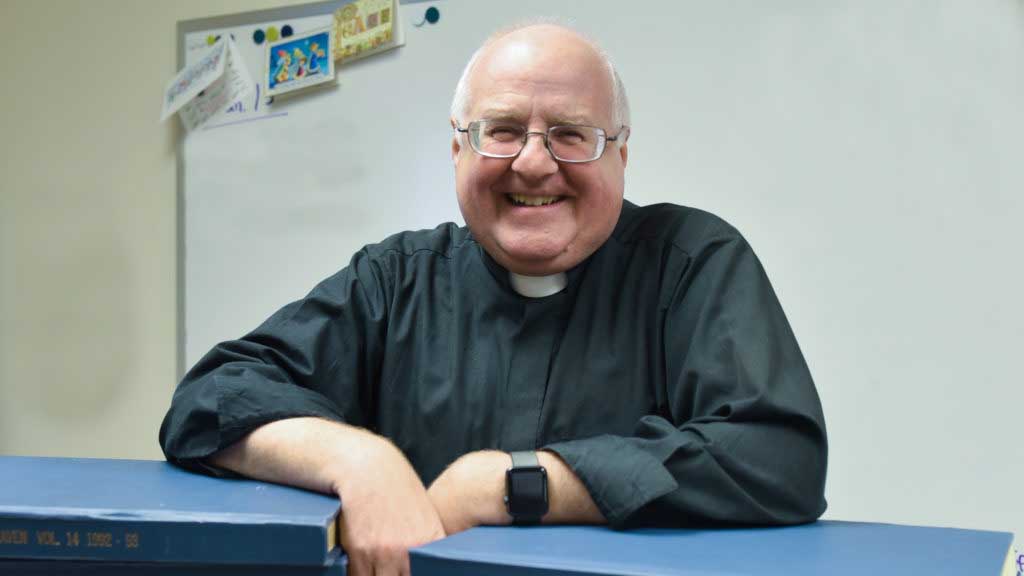
by Father Mark Goldasich
Every time a particular date rolls around, it makes me smile. I recall a column that I wrote years ago here that proved to be a bit controversial.
It dealt with some changes that were coming to the archdiocese at that time: Beginning after Easter that year, there would be no more Saturday evening Masses celebrated in the archdiocese, nor would cash or checks be accepted in the collection, only online giving or credit or debit cards that the ushers would handle during the offertory. In the next academic year, all Catholic schools would go to a four-day week to save on energy and personnel costs. And finally, The Leaven was going to double in size from 16 to 32 pages.
It was those first two — the cancellation of Saturday evening Masses and the new way to collect funds for church — that upset people the most. The last two about schools and The Leaven, yeah, not so much.
Unfortunately, some folks stopped reading that column after the first few paragraphs. It was only later that I directed readers to take note of the publication date of that issue of The Leaven: It was April 1, April Fools’ Day.
That prank happened 14 years ago, and I’ve never attempted anything like that since. But honestly, I really do enjoy a festive April Fools’ Day.
As you might expect, its origins are disputed. According to a post on the Rutgers University website, most historians now believe that it came about in the 1500s in France when the world was switching from the Julian calendar (named after Julius Caesar) to the Gregorian calendar (introduced by Pope Gregory XIII and still used in much of the world today). In the old Julian calendar, the new year began on April 1 while in the Gregorian calendar the new year began on Jan. 1. Since news traveled so slowly back in those days, not everyone got the word that the new year now began on Jan. 1. So, those who still celebrated it on April 1 were mocked as April fools.
Because I’m not the most serious person in the world, I’m a firm believer in the healing power of fun and laughter. Let’s face it, our world today can be a very scary, depressing and flawed place. Fun and laughter can counteract those dark attitudes and help people to rediscover, especially in this Jubilee year, the power of hope.
The church seems to understand this because even amid this penitential season of Lent, we’re given breaks, times to celebrate, with the feast days of St. Patrick, St. Joseph and the Annunciation. Most of the time April Fools’ Day also falls during Lent.
So, don’t be afraid to have a bit of fun this April Fools’ Day. Just make sure that your pranks are not demeaning or hurtful. Why not bring a treat to work like a doughnut box filled instead with carrots, radishes and celery sticks or place a few caramel onions disguised as caramel apples in the break room? Or make someone’s drive to work that day much more entertaining by hiding a “honk and smile at me” sign on their car. Or stick a small piece of tape or a sticker over the sensor on the remote control and make folks change channels the old-fashioned way . . . by hand! Or buy a package of googly eyes and stick them on, well, everything.
No matter what, this coming Tuesday as April Fools’ Day unrolls, keep a lighthearted spirit, whether you’re the prankster or the victim for, as the Protestant theologian Karl Barth once said: “Laughter is the closest thing to the grace of God.”

